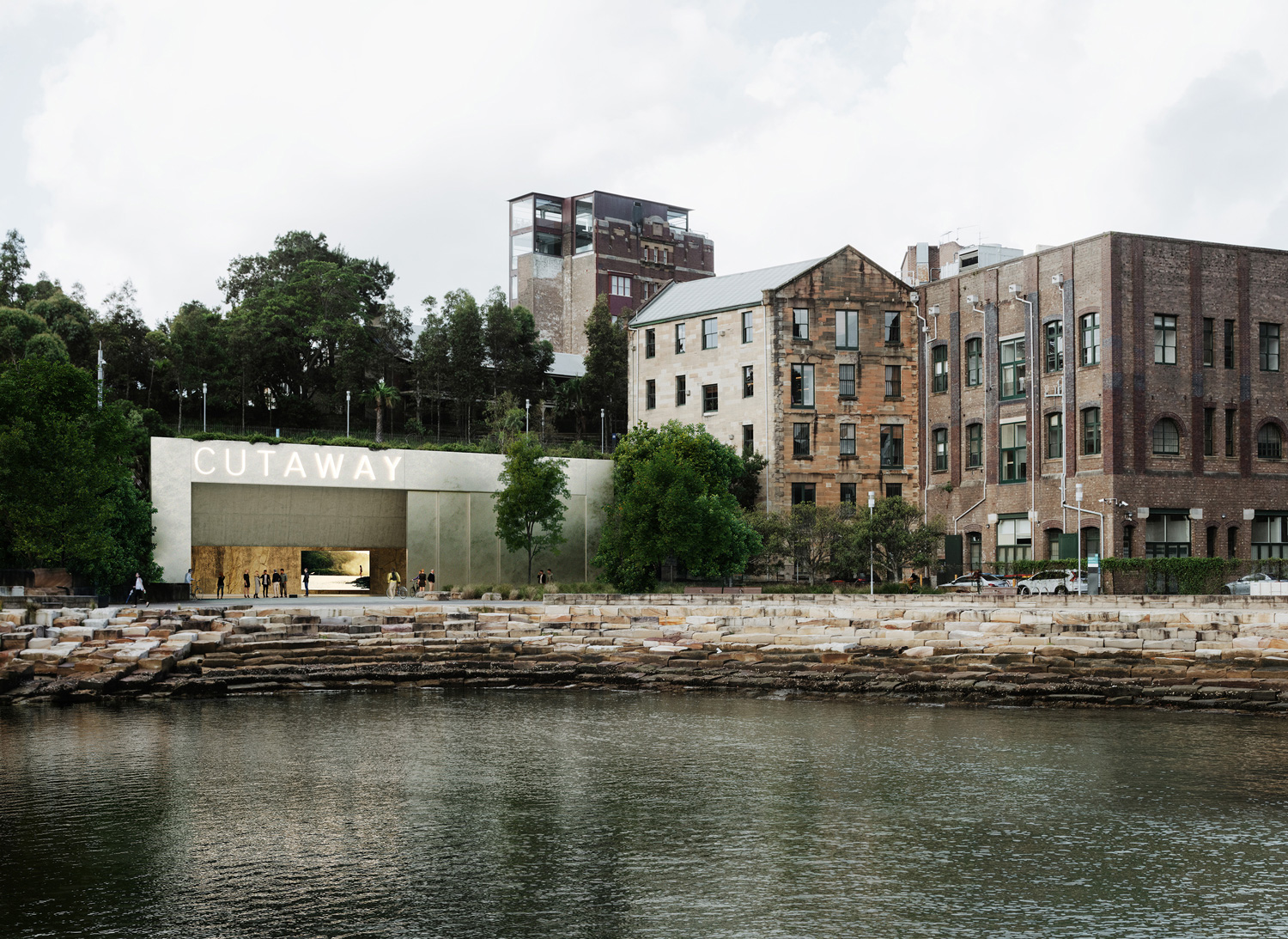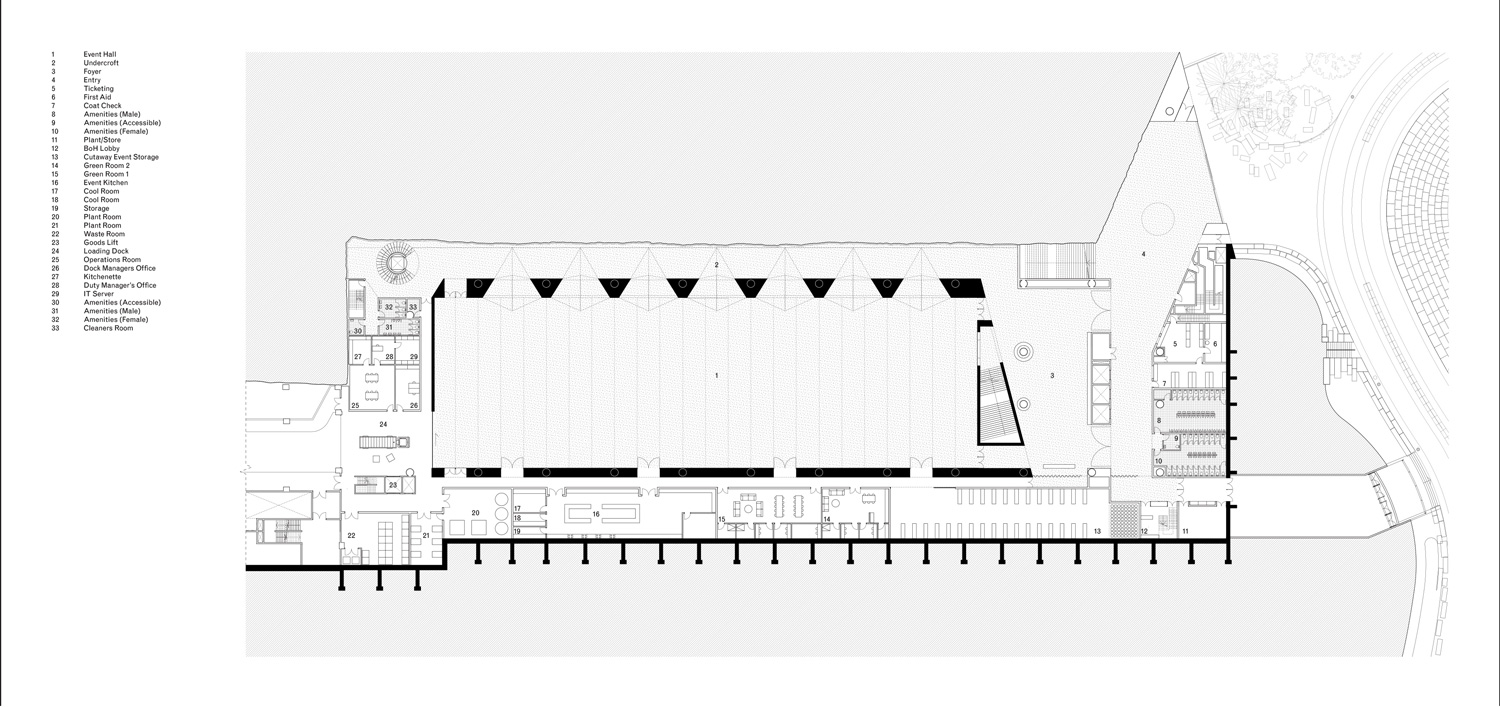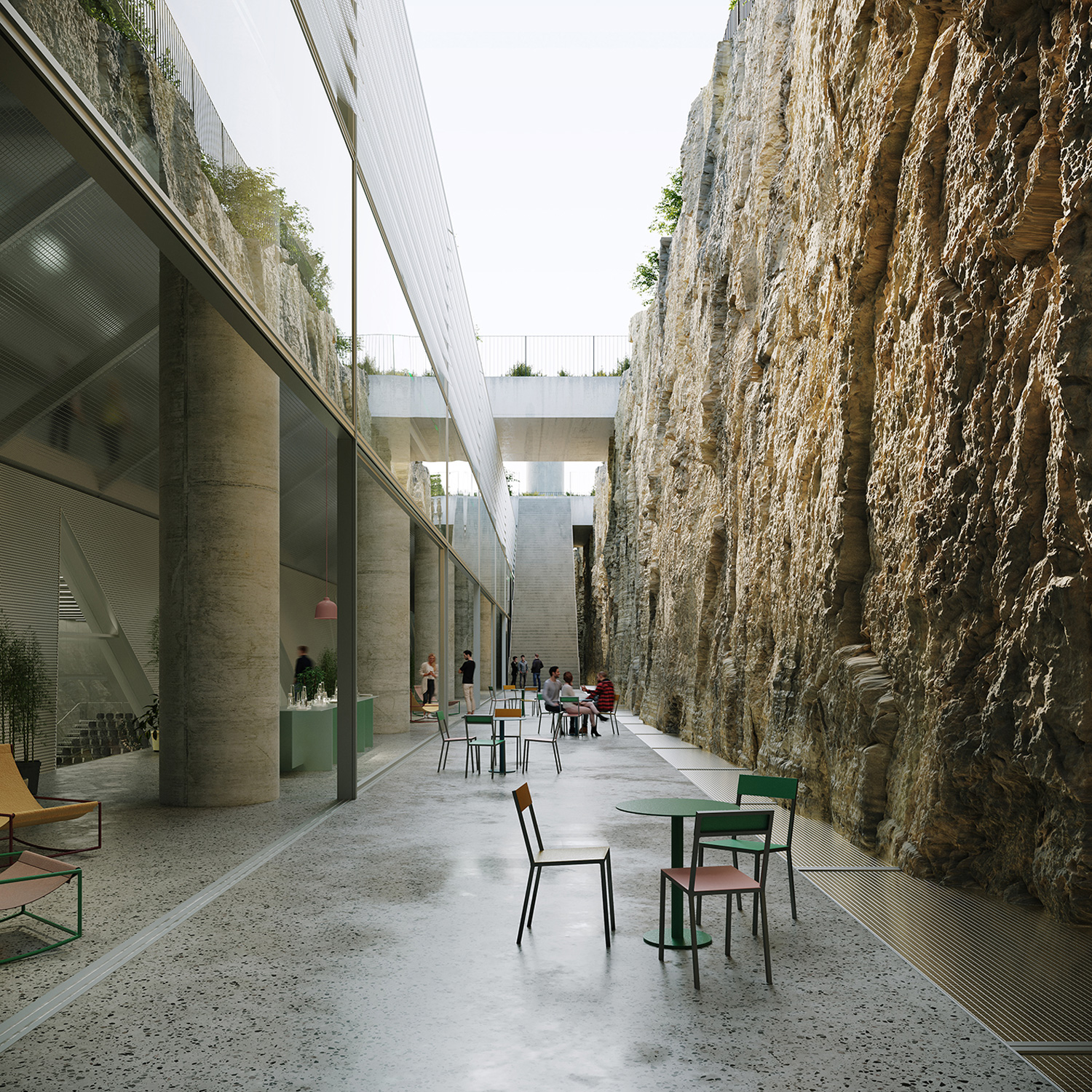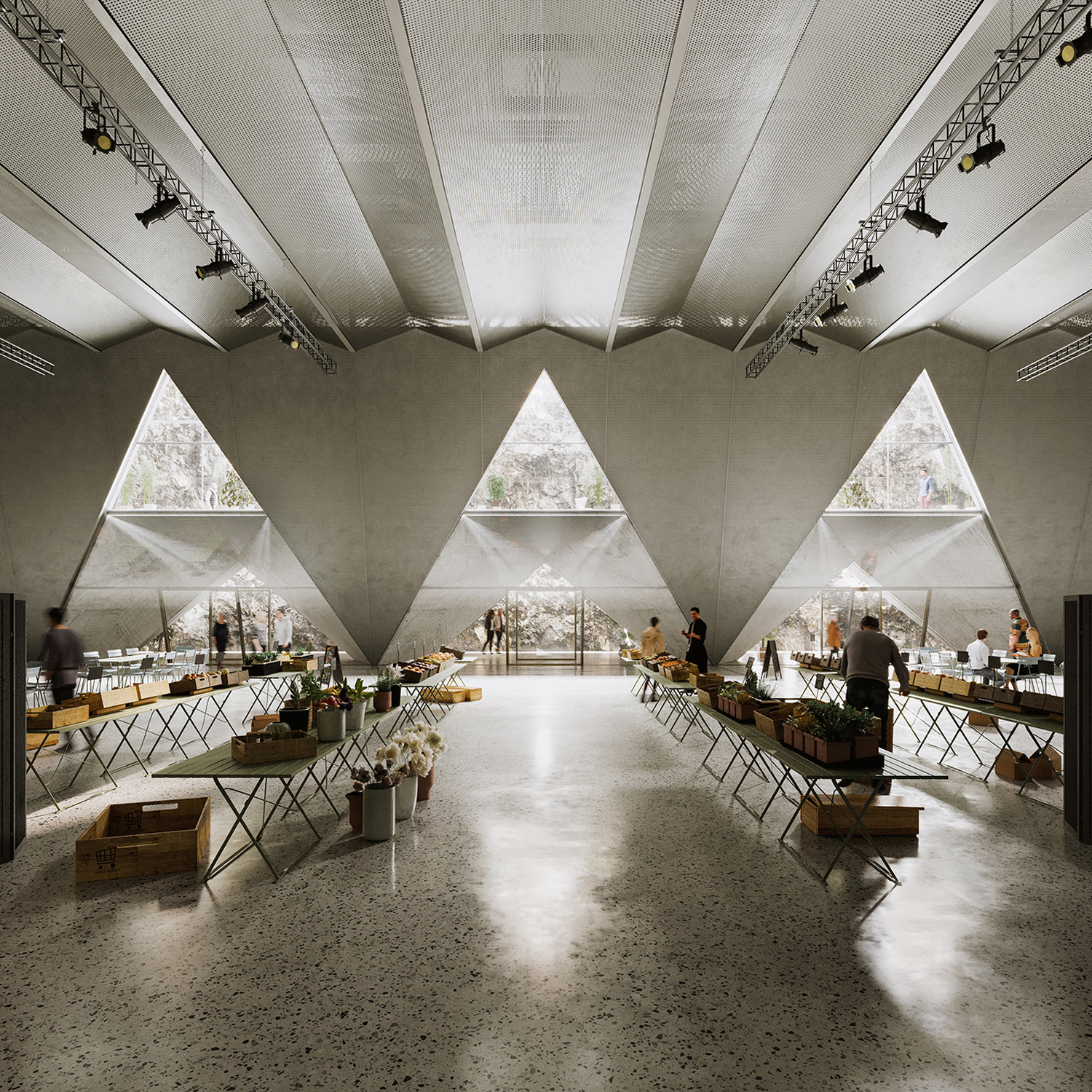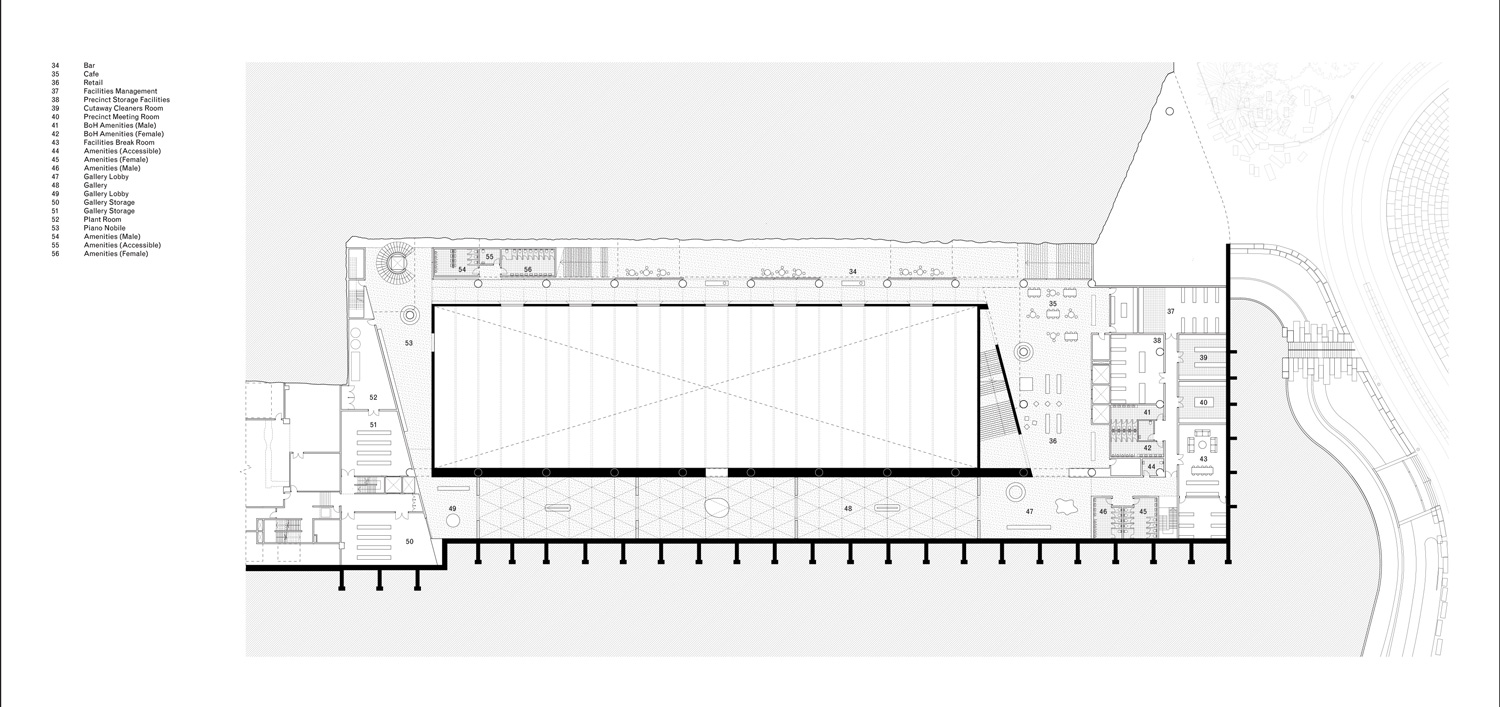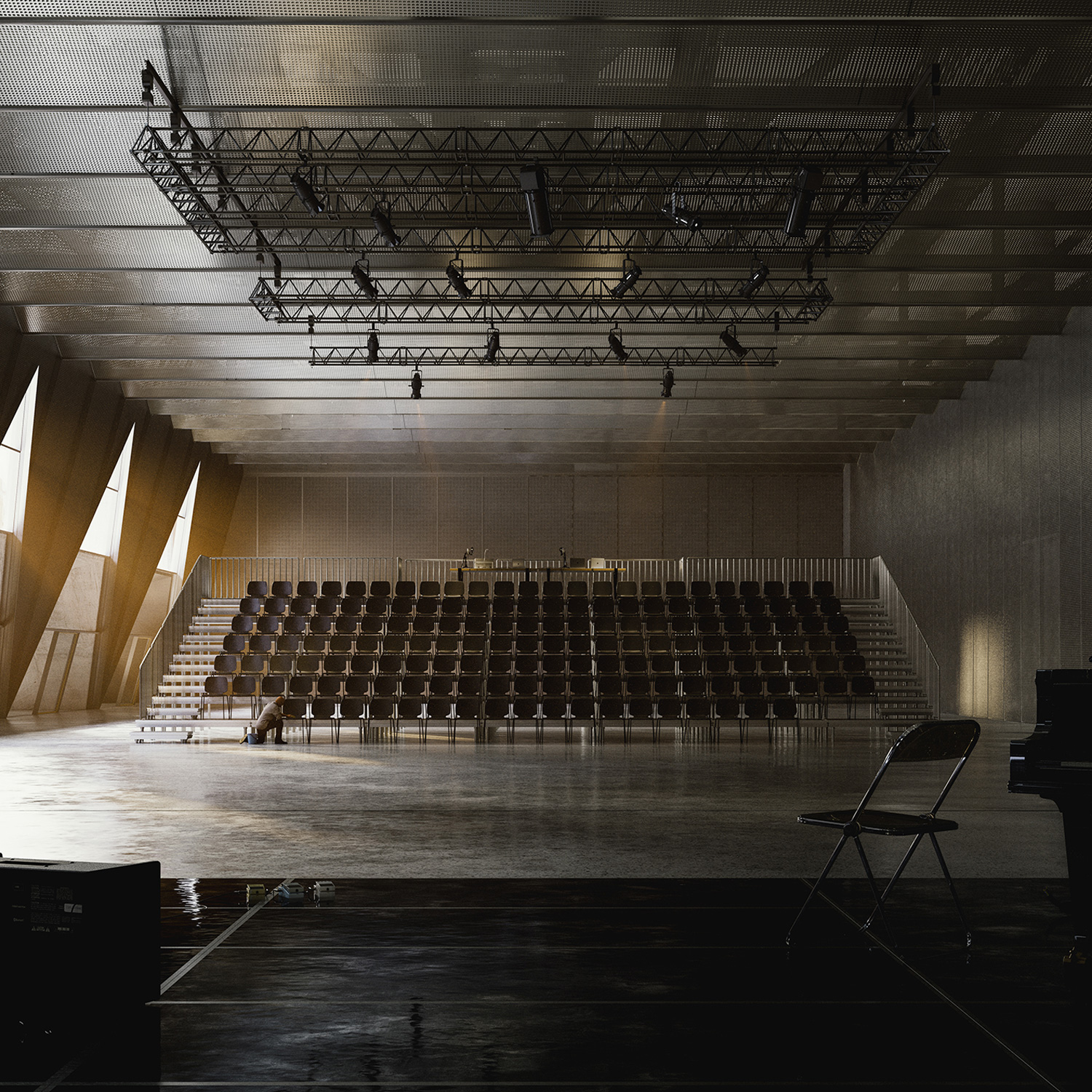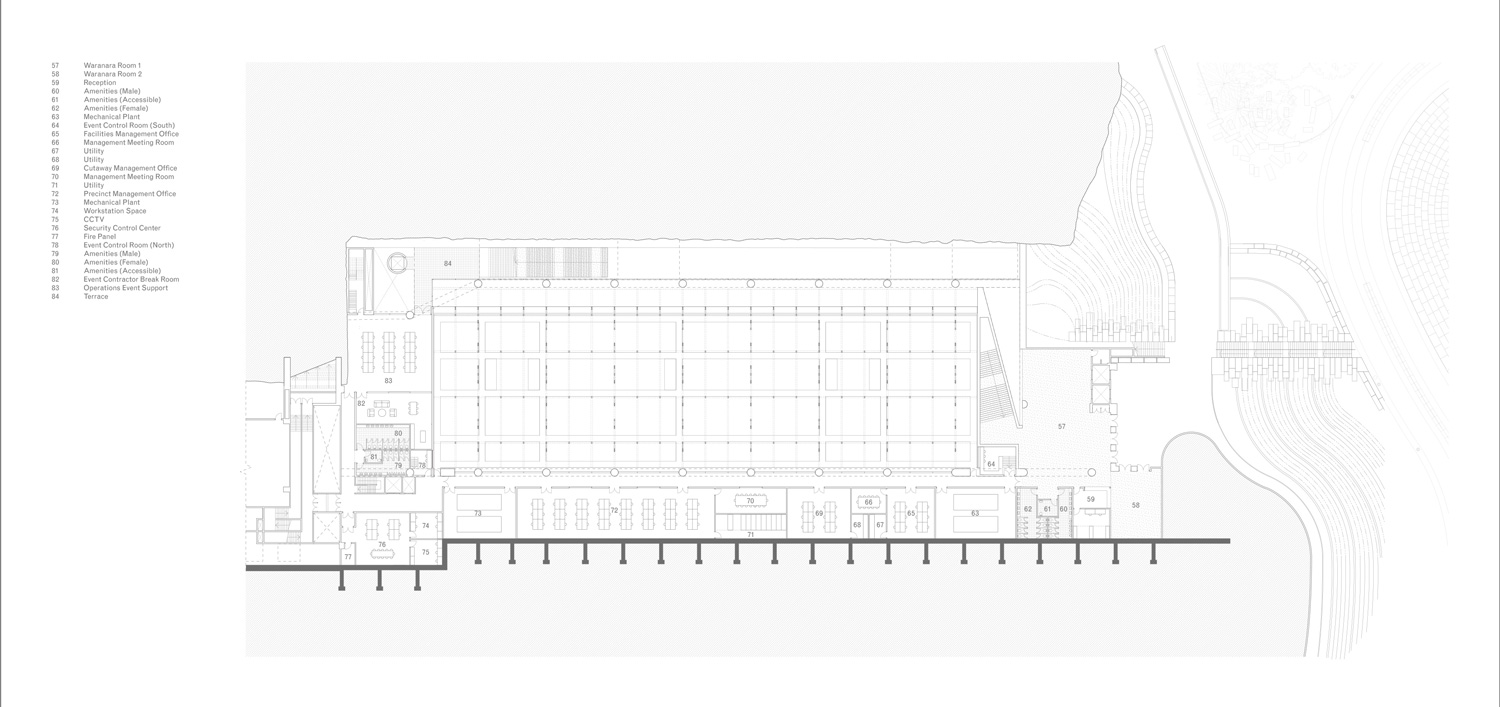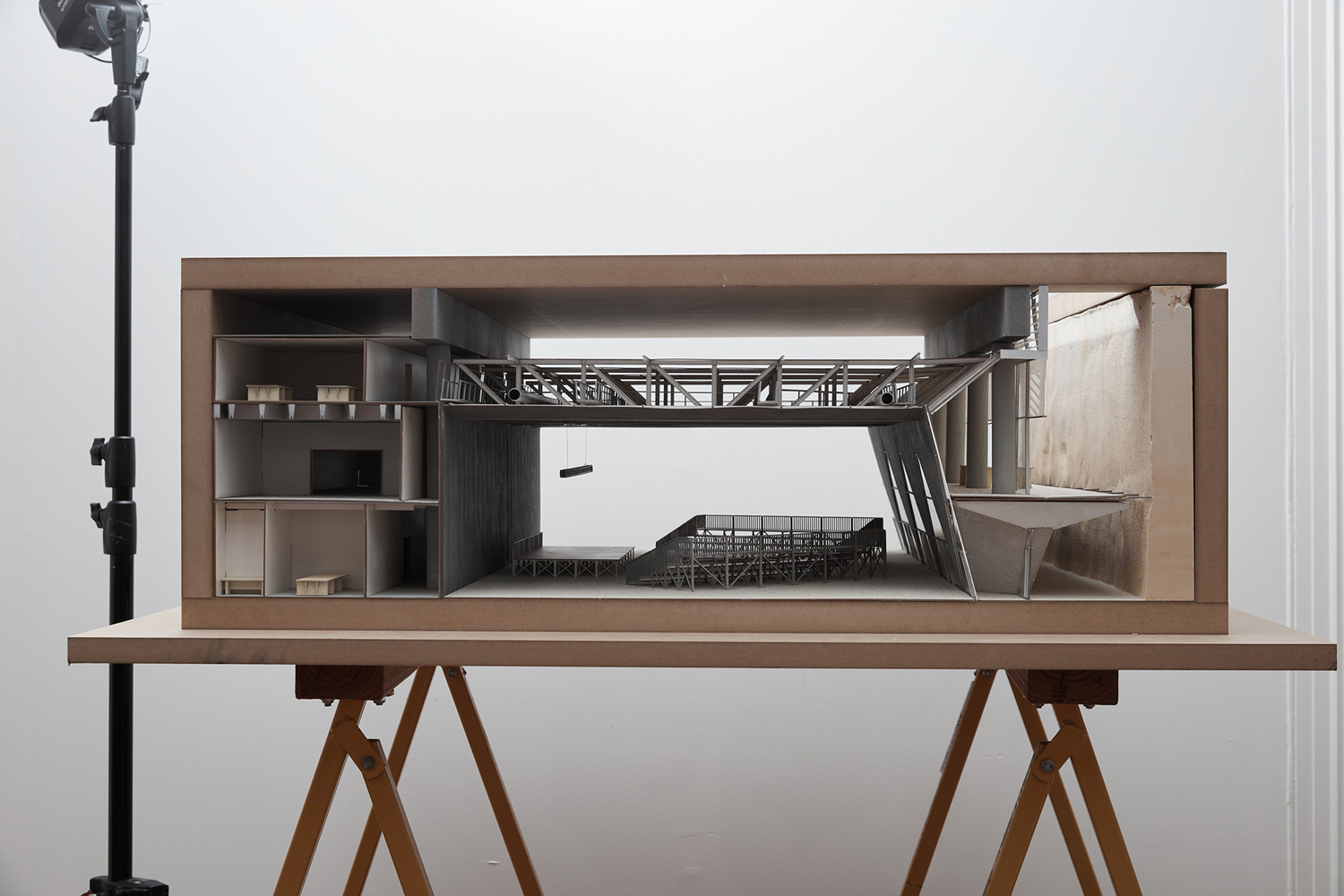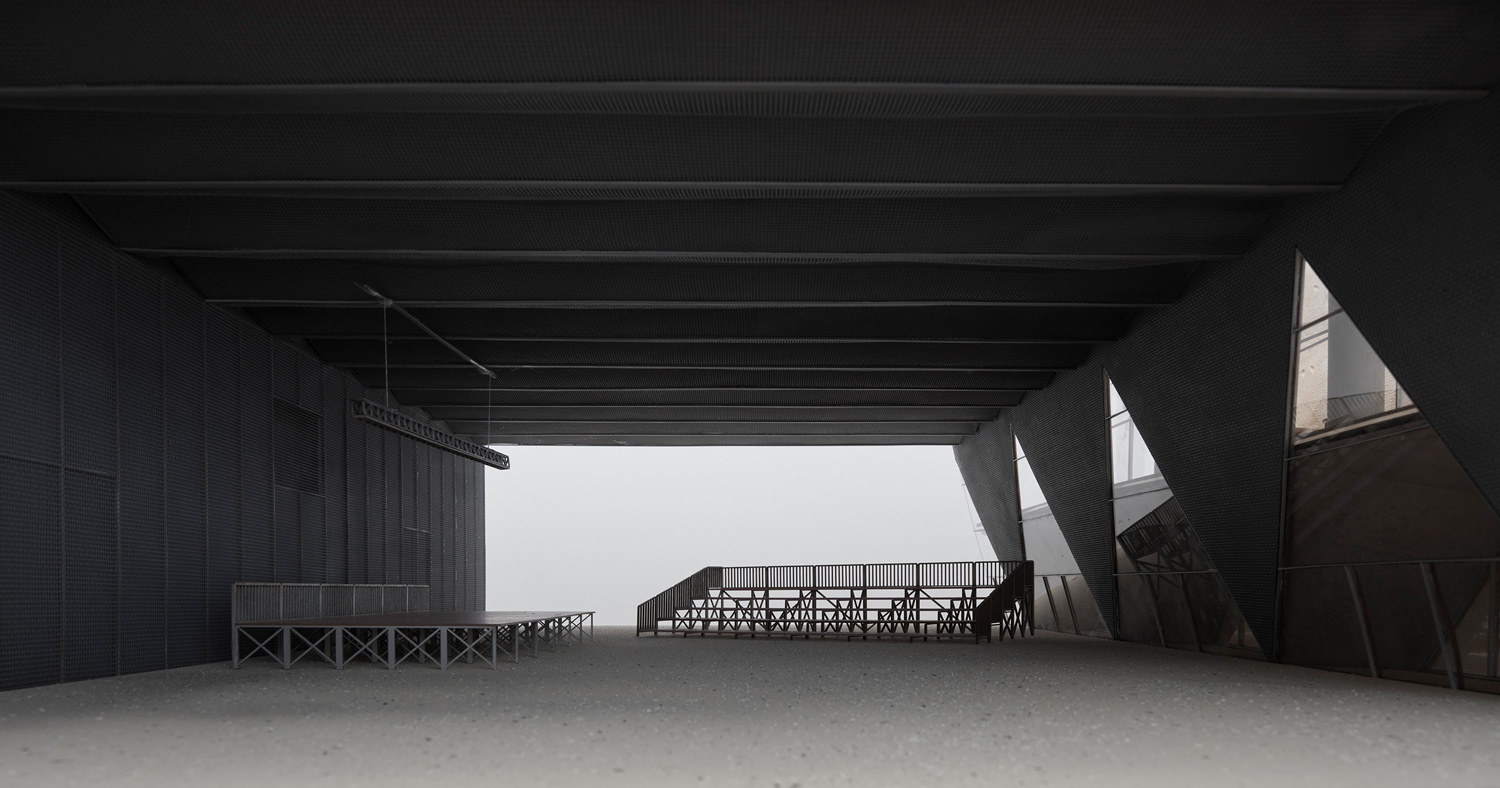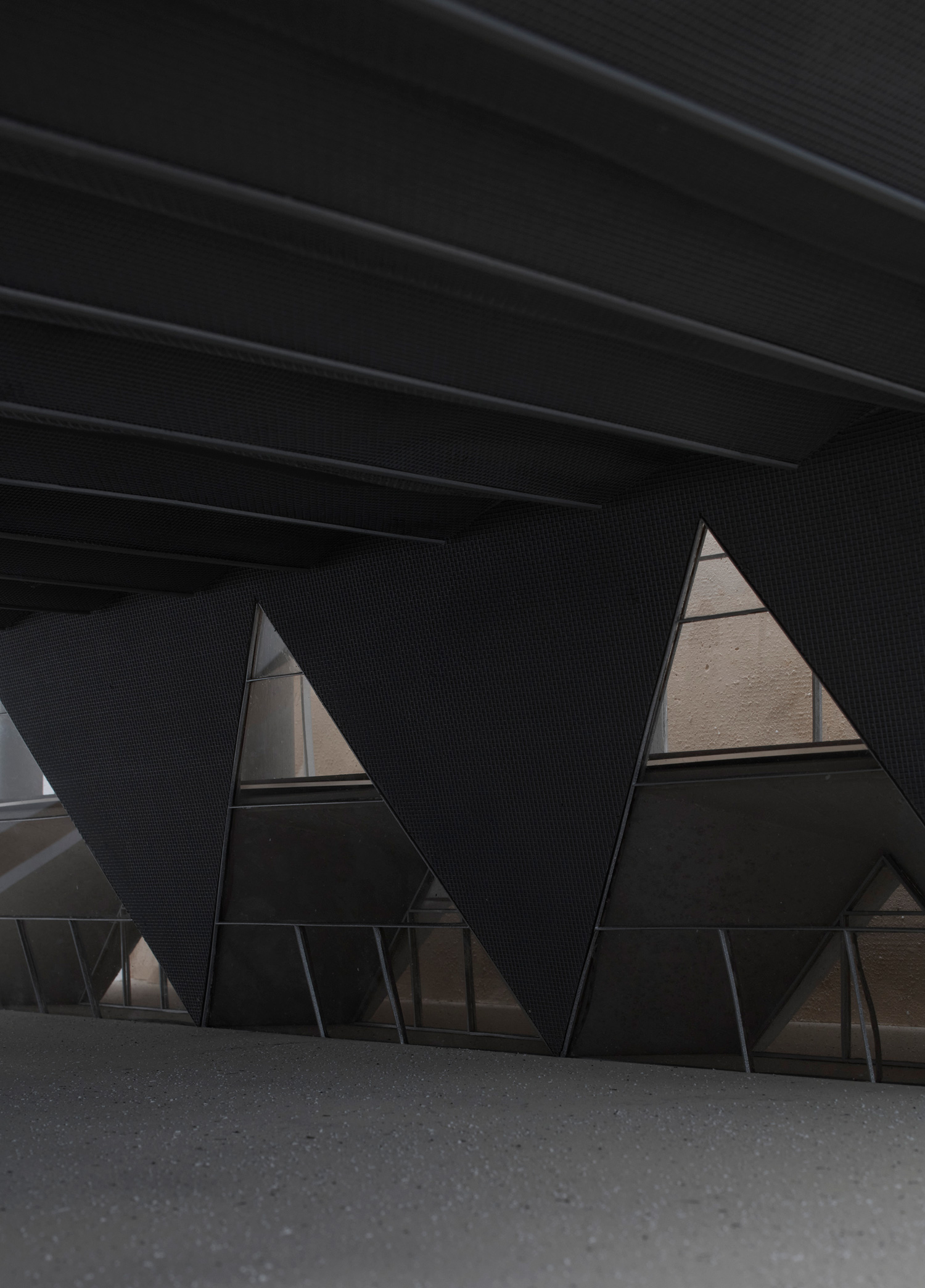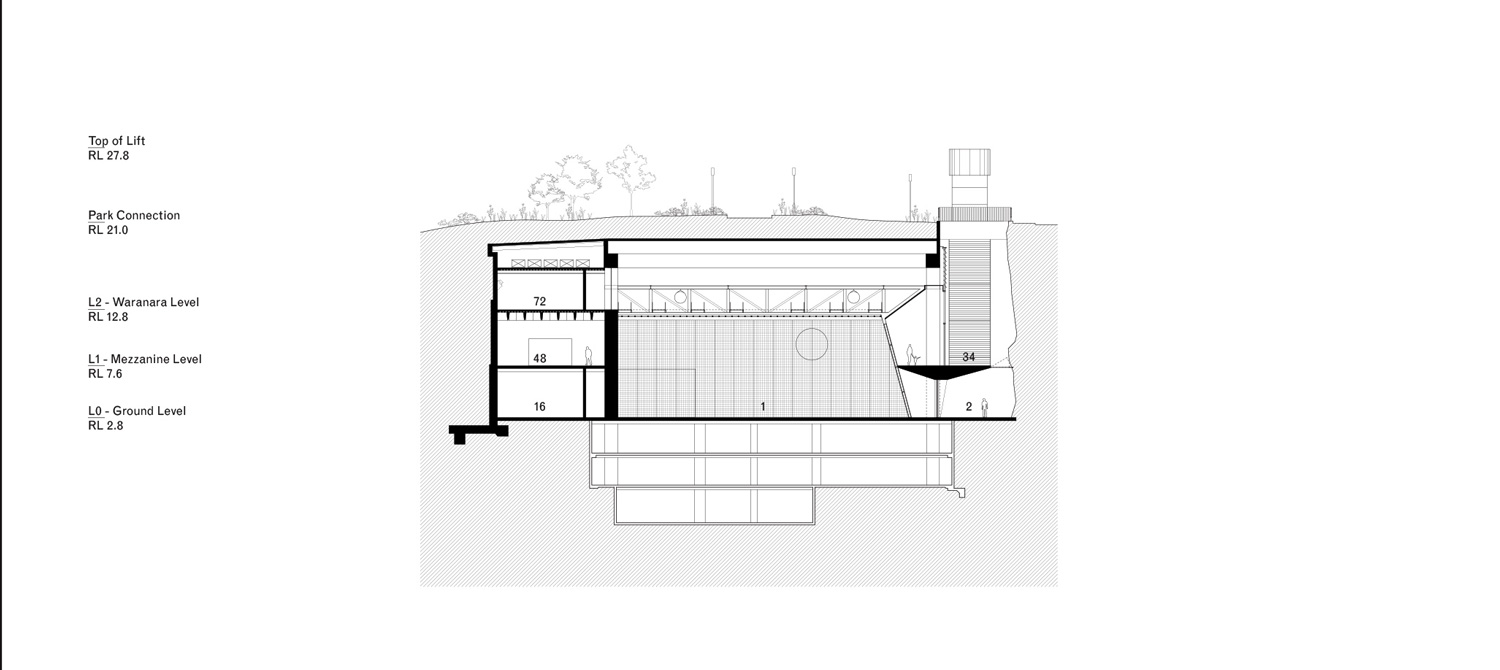2951-GFA-SYD.AU-2022
Client: Unknown
Status: Competition (2022)
Clasification: 2 prize
Location: Sydney, Australia
Coordinates: -33.860396, 151.202053
Climate: Temperate, Humid subtropical
Materials: Concrete, Stone
Environments: Seaside, Urban
Visualizer: Jeudi Wang
Scale: Medium
Types: Cultural, Cultural center, Refurbishment
The proposal sets up the conditions for the Cutaway Cultural Precinct to emerge, by establishing an urban-cultural typology that aims to create an institution that links itself to its broader context. It addresses the collective imagination of Sydney’s legacy of monumental interiors while unfolding a possible framework for new contemporary audiences to emerge.
A new layered building sits inside an existing infrastructural building, adopting a three-part vertical organization by placing the main event hall and its amenities on the ground level; the gallery and pre-function areas on the mezzanine level; and the technical floor and Waranara room on the second level. These primary programs run longitudinally in the plan with adjacent ancillary areas discreetly serving the main room.
The oceanic panorama and picturesque presence of the reconstituted mountain precede the experience of entering the Cutaway. After passing through the massive metallic entry door with big signage, a drastic shift in scale introduces the generous yet austere foyer. At this point, visitors can freely pursue three options: the urban thoroughfare along the main hall, the event room via any of the seven gateways, or the internal stairway that leads to the continuous piano nobile and the Waranara room.
The ultimate protagonist is the event hall. Monumental yet approachable, the enormous interior is the cultural overcoat that creates a condition of sheltered publicness. The multi-functional room conjures a strong graphic and formal identity while fulfilling the technical requirements of a flexible event space to host music performances, fashion catwalks, food markets and art fairs. The long room is enclosed from the climate yet open to the generosity of light, the land itself, and the urban passage via some triangular openings over an inclined wall. The main hall simultaneously performs for large audiences and the wandering visitor.
The 86x27x9m hall is served by a technical floor above that is defined by deep beams that span the existing structure, a back-of-house on the western side, a loading dock on the north, and public access along the eastern wall. The room can provide partial to complete enclosure to optimize the space’s acoustic and lighting performance. Its triangular gateways offer glimpses of the sandstone cliff face while playfully turning each audience member into an instant celebrity making a grand entrance. It also allows urban voyeurs to observe people and events from the chic piano nobile. An alleyway and destination all at once, this buffer space didactically reveals the complexity of the section where multiple environments coexist amongst layered materiality. Further, the iconographic triangular motif is both explicit and subtle in appearance across the project’s different spaces and ties together its heterogeneous collection of characteristic interiors.
Combinations of banal and luxurious materials, structures, acoustics, economics, and technologies compose a multi-layered assembly of products from aluminium to plasterboard finishes. The project hosts a rich language of surfaces, some raw and rough, others smooth and articulated by exaggerated windows, and is complemented by playful signage, colourful furniture, giant blinds, and various other features.
Both urban and iconic, the proposal combines a simple plan with a thick section full of intention. Its architectural definition celebrates and amplifies the dramatic space provided by the Cutaway and its layered history. The project offers a sense of identity and flexibility, a majestic cultural interior for Sydney. Any less would have not been enough.
